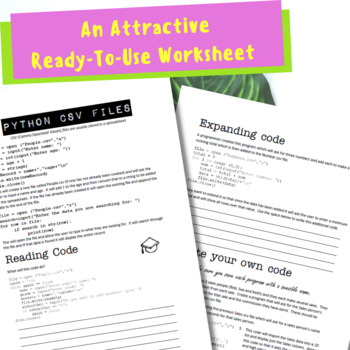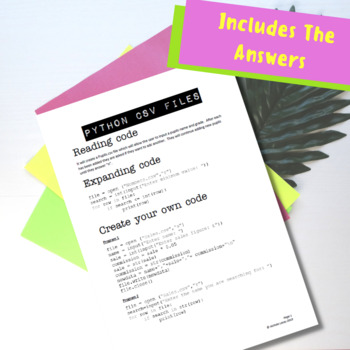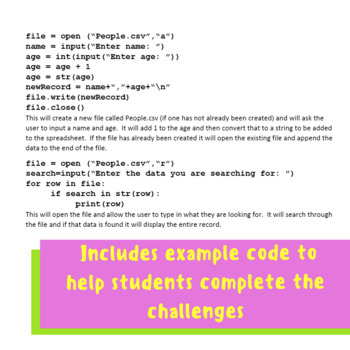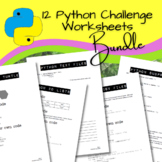Python External CSV Files Programming Challenges
- Zip
Also included in
- This bundle contains 12 PDF worksheets containing 65 Python coding challenges focusing on specific skills which help pupils to focus on one skill at a time. It also includes 12 PDF worksheets which contain the answers.Download the preview now and see for yourself how useful and flexible this workshePrice $55.60Original Price $65.00Save $9.40
Description
Do your students need a little extra help with writing to and reading from external CSV files using Python programming? Are you looking for some ready to use programming challenges that can be easily incorporated into your lessons?
Download the preview now and see for yourself how useful and flexible this worksheet can be.
HOW CAN THESE PYTHON PROGRAMMING CHALLENGES BE USED?
This worksheet is idea for:
- A summative assessment task in the classroom
- A plenary activity
- A homework task
WHAT IS INCLUDED?
This 2-page PDF printable handout includes:
- example code,
- a task to read code,
- a task to correct code and
- 3 practical challenges for them to practice writing Python code.
You even have a separate PDF with possible answers.
The diversity of these external CSV file challenges allow pupils to develop a variety of useful programming skills. This resource is perfect for established computer science teachers, non-specialist teachers or newly qualified teachers.
What are you waiting for? Take action straight away and grab your copy of this wonderful worksheet today that will keep your pupils engaged and making real progress. Everything is done for you which will save you hours of preparation time.
Please note: This resource is a non-editable PDF






